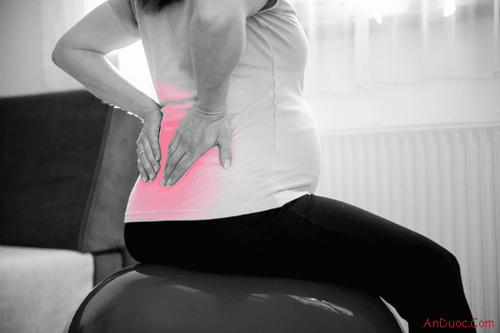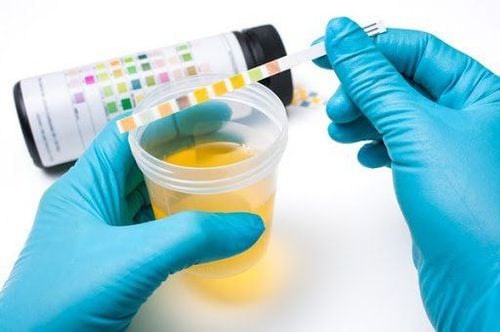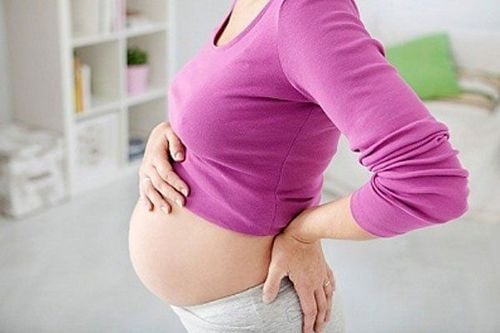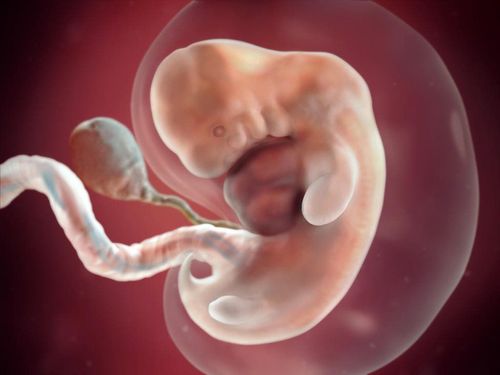This is an automatically translated article.
The article was professionally consulted by Dr. Nguyen Anh Tu - Doctor of Obstetric Ultrasound - Prenatal Diagnosis - Obstetrics Department - Vinmec Hai Phong International General Hospital.The journey of 9 months and 10 days of fetal development in the womb is magical. Surely mothers will always want to know how their child is growing, how is their baby developing?... This article will tell mothers about the formation and development of the fetus week by week. .
1. Stage 1: Embryo formation
Stage 1: When the vagina expands and has a highly acidic environment, more than 60 million sperm can pass through the vagina and can reach the woman's cervix.Stage 2: There is a layer of mucus in the cervix that makes it difficult for sperm to move. There are about 100,000 sperm left that can get through this mucus.
Stage 3: Sperm move at a speed of 5mm/min and pass through the cervix in just 10 minutes. The white blood cells here see the appearance of a foreign character, so they will destroy the sperm. There are about 200 sperm left that can reach the fallopian tube
Stage 4: With 10cm of the fallopian tube they need to pass to get the strongest sperm to meet the egg
The strongest sperm will release Enzymes form a film that protects the entire surface of the egg, the egg then closes all the small holes. The sperm and the egg will then fuse together to form a zygote.
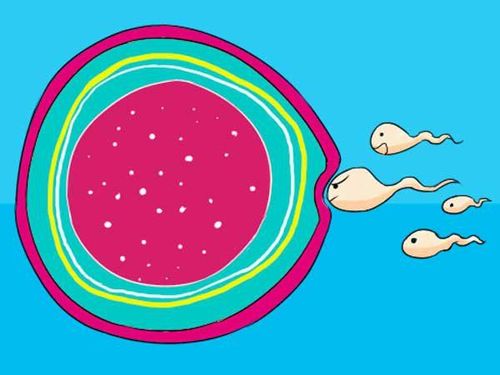
2. Stage 2: Fetal development through weeks
1 week old fetus The lining of the uterus will be thickened to support and nourish the fertilized egg. This lining will follow the blood out during the next menstrual period if fertilization does not take place.2 weeks fetus Conception usually takes place in the fallopian tube, but of course the mother will not realize this because there are no outward symptoms.
2.1. The first trimester of pregnancy The first 3 months of pregnancy is the time when the mother will witness her body appear full of new changes. The development of the fetus during this time is often very slow because the baby is building an important foundation for development in the following months.
3 weeks pregnant This is the time to confirm the mother's successful conception. Entering the 3rd week of pregnancy, the mother will see the first sign of 1 week late period. The fertilized egg forms a zygote, the zygote will gradually move into the mother's uterus to choose the best "dwelling" place for the next 9 months. The pregnant mother's body will receive a signal and secrete more estrogen and progesterone, these hormones will help maintain and nourish the baby throughout pregnancy.
4 weeks pregnant The pregnancy is still going on and some mothers may not even know they are pregnant. The fertilized egg cell is nestled inside the lining of the uterus, shaped like a ball with hundreds of small cells that will develop into a fetus later. The embryo will begin to produce the pregnancy hormone hCG – the hormone that prevents you from ovulating every month. Moreover, the embryo will begin to function cells to create the initial structure of the fetal body.
5 weeks fetus At the 5th week of pregnancy, the embryo is officially formed. It's been 4 weeks since you started your last period. Entering week 5, you can tell you are pregnant through a few early signs of pregnancy. A 5-week-old fetus is only as big as a small dot, but this size is already 10,000 times larger than when the mother was conceived. And also in this week of pregnancy, the signs of pregnancy will appear in turn so that the mother can be more certain when using a pregnancy test to check.
6 weeks pregnant This is the right time to have your first prenatal visit. The fetus at the six-week mark was shaped and measured by ultrasound. The doctor will measure the average length of the gestational sac, which will be about 5-6 mm. The size of the fetus at this time is about 1cm, equivalent to an apple seed and looks like a tadpole, but this is a very fast development stage. The circulatory system and skeletal system begin to form, the baby's heart will begin to beat.
7 weeks pregnant At 7 weeks pregnant, the fetal heartbeat can be heard clearly through ultrasound. You can go for an ultrasound so the doctor can hear your baby's heartbeat, the first sign that a germ is growing in your lap. Your baby has grown to the size of a pea. This week, your baby is focusing on brain development. In addition, the liver is performing the function of producing red blood cells until the bone marrow is formed. In addition, parts such as the nose, mouth and ears begin to take shape. This is a very special week, marking the time when you start having morning sickness.
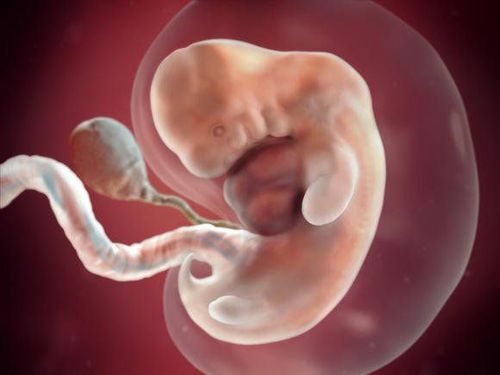
9 week old fetus 9 week old fetus is about the size of a grape, about 2.3cm long. The baby's genital system is gradually formed, but it is not until 15-17 weeks that the baby's sex can be accurately predicted. Your baby's mouth and tongue are forming this week. The hand at the moment is also divided into individual fingers. Your baby is starting to make movements, but she's so small that you can barely feel them. Nerve cells are branching and forming the first neural tubes.
10 weeks pregnant Fetal heart is divided into four chambers and can be heard with Doppler ultrasound. All parts of the baby have developed but the brain is still large and the digestive system is still in the process of developing.
Basically, the 10-week-old fetus has physiologically developed in the right position, even developing tiny earlobes, but there are still many more parts to develop later. Week 10, the embryonic tail has disappeared, the size of the fetus is as big as a cherry.
11 Weeks Fetal Your baby's larynx is forming at 11 weeks, but it still takes some time to complete. Baby's hands begin to move and clenched into fists. Meanwhile, the brain and nervous systems are still on the rise. Although the genitals have been formed, it is still too difficult to determine the sex. This week, the tooth buds have also sprouted and the eyes are fully formed, the baby's body is hairy and the face is more defined. At this time, the baby is as big as a strawberry.
12 weeks pregnant This week when you can see your baby's body has become stronger and looks a lot more baby. The baby's central nervous system, heart, liver, and excretory system have basically completed their functions. 12 weeks pregnant is also an important fetal ultrasound time for doctors to monitor fetal heart rate. A healthy fetus will have a heart rate of 120-160 beats per minute. The size of a 12-week-old fetus can be as big as a lemon.
13 weeks fetus At 13 weeks, your baby will have internal reflexes such as fingers that can be spread or contracted, toes can be flexed and mouth movements like sucking but you still cannot feel it. Get baby activities. Your baby is about the size of a plum and can feel external influences such as when you lightly poke your belly. By this week, the baby has its own special identification mark - that is, fingerprints. Not only that, the baby also knows how to frown and grimace when in the womb.
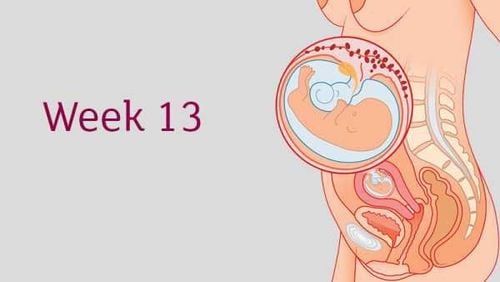
14 weeks fetus The size and weight of the fetus from week 14 onwards will have a significant growth. On average, the fetus will gain about 2 grams a week. The fetal central nervous system has grown to several million cells, and the sex organs are also being formed more specifically this week.
15 weeks fetus At 15 weeks pregnant, the fetus is about 10.1cm long and weighs about 70g – about the size of a small apple. Even though your baby's eyelids aren't open yet, he can already see if light passes through the womb. Your baby's brain impulses start to work and he's also starting to make facial muscle movements. The kidneys also begin to work in week 15. If you have an ultrasound, you will see that your baby is sucking his thumb. A 15-week-old fetus is the size of a peach.
16 week old fetus The 16 week old fetus is much stronger thanks to the growing skeletal system. Therefore, pregnant women need to supplement with calcium every day as well as apply appropriate pregnancy methods to support the brain development of their children.
17 weeks pregnant Baby can move joints and sweat glands are also more developed. The size of the 17-week-old fetus from head to bottom is about 13cm and weighs about 140g. The 17-week-old fetus is as big as an avocado, the details on the scalp gradually appear but the hair is still not visible. The legs are more developed and you can feel this through the baby's kicks. The baby's head is straighter and the ears are gradually forming into the correct position.
18 weeks pregnant Baby's body is more balanced with limbs that have grown evenly with the body, a few hairs have begun to undulate on the baby's head. At 18 weeks, the fetus is as big as a pomegranate and can move its joints and skeleton is made up of soft cartilage that has hardened. The umbilical cord grows stronger and thicker.
19 weeks pregnant Mother can even feel the fetal heartbeat beating inside her body. The fetal sex organs have been completed since the previous week, so if you have an ultrasound this week, you can completely know the sex of the fetus. Baby has grown as an artichoke flower. Your baby can bend his legs and you will feel the movement. Myelin sheaths are gradually forming around the nerves.
20 weeks pregnant Your baby has gained up to 300 grams this week and is 16.4 cm long from head to rump. The fetus is still swallowing amniotic fluid very actively to practice for later digestion. Your baby's eyes are still closed, but some pupillary movements can occur during the 20th week of pregnancy. Week 20, the senses such as smell, sight, touch, taste, hearing are developing and Baby can hear what you say. At this time, the baby is as big as a mango.
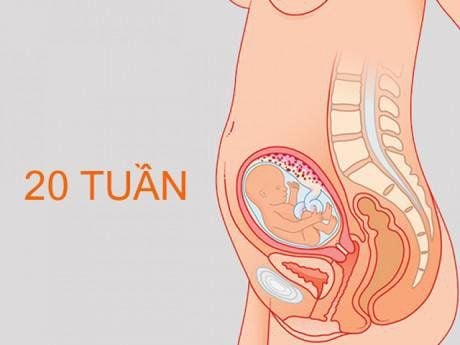
22 weeks fetus At 22 weeks old, your baby looks like a newborn baby. The 22-week fetus weighs about 430g and has a head and foot size of 26.7cm, equivalent to a small pumpkin. By this week, the baby's kicking and turning movements are much stronger and make the mother often feel a sharp pain in the abdomen.
23 weeks old fetus The baby's nostrils are open this week, not closed like in previous weeks. Besides, the contours of your baby's face have become very clear and her body has become much rounder. Week 23, your baby already looks like a newborn with complete organs but She is still small because she is only as big as a coconut, but the eye color pigments have not yet appeared.
24 weeks pregnant Mom is already halfway through the pregnancy. At this week, the first amount of fat will accumulate under your baby's fingers, palms, and legs. Baby's skin begins to stretch to accumulate fat gradually until the baby is born.
The fetal nervous system will develop rapidly this week, the baby's eyes have begun to blink, the baby's ears have heard your parents' voices and the senses have also been much sharper. In particular, the mother will be very surprised when she feels the phenomenon of mechanical pregnancy happening. At this week, the first amount of fat will accumulate under your baby's fingers, palms, and legs. Baby's skin begins to stretch to accumulate fat gradually until the baby is born. At this time, the baby has grown to be the size of a grapefruit.
25 week old fetus The baby's skin at this stage is still very thin and the mother can see the baby's blood vessels in 3D, 4D ultrasound. Your baby is weighing about 660g and is about 34.6cm long from head to toe. Week 25, the fetus looks quite long and thin but in fact protein is actively adding to make up the baby's skin. Your baby's skin is still thin and translucent but this will soon change too. A 25-week-old fetus is as big as a cantaloupe.
26 weeks fetus 26 weeks old baby will maintain a lot of naps to perfect vision as well as brain. Week 26, baby is the size of a cauliflower, his wrinkled skin is gradually stretched by the fat layer inside the skin is gradually forming. This helps the baby look more like a newborn. Hair begins to grow and has color and texture. The baby's weight at this time is about 900 grams. The baby's head is already in proportion to the body and looks almost normal. A lot of brain development takes place during sleep.
27 weeks fetus This week, your baby has added 300-400 grams. Most of the time, the fetus will sleep to save energy and accumulate necessary body fat. At 27 weeks, your baby is as big as a kale plant. The baby will breathe in and release amniotic fluid to help the lungs develop. This breathing activity is an exercise to prepare for breathing air after birth. This is the time when the fetus is most active with strong movements. This shows that the baby is healthy and developing very well.
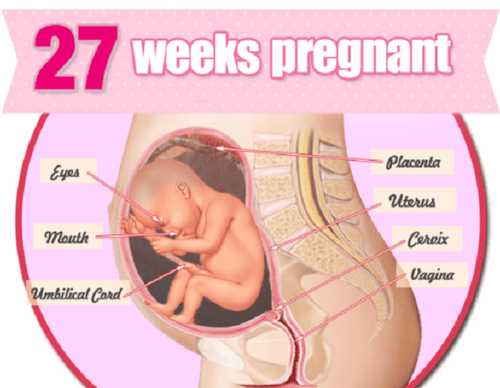
28 weeks pregnant This week, the baby's brain is developing at a fast rate, so pregnant women should eat a variety of brain foods such as fish. The fetus now weighs about 1kg and has mostly lived a separate life inside the mother's womb. The baby's head has shrunk with its brain almost fully developed, and its arms and legs are strong enough to be able to kick the wall of the mother's belly. The fetus is still constantly swallowing amniotic fluid and absorbing fat to store fat to protect body temperature. At this point, I have grown to be the size of a cabbage.
29 weeks pregnant week 29, your baby's eyesight is still developing and he can perceive light from outside. Your baby will be able to blink and his eyelashes will continue to grow. Your baby's eyesight is now 1/20 and will continue to develop more in the following weeks. The baby has gradually memorized the voices of his father and mother if parents spend time every day talking to their children.
30 weeks fetus The baby's eye opening and closing activities have become very flexible this week of pregnancy. The baby's head is also bigger to give the brain space to develop. The lungs and muscles work harder to prepare for function in the outside world. Your baby will still sleep most of the time. When the baby is awake, you will feel your belly rising and falling in the places where the baby is moving as well as feel the push of the knee or elbow on the belly wall, or the rhythmic hiccups. baby's inside.
31 weeks fetus The baby's lungs have completed at 31 weeks of pregnancy, so if born at this time, the baby can still breathe on its own. The baby's size is about the same as a Siamese coconut with a length of about 41.2 cm and surrounded by 1.5 liters of amniotic fluid. As your baby gets older and takes up more space inside the uterus, the amount of amniotic fluid decreases. Your baby is starting to pick up speed and gain weight very quickly this week.
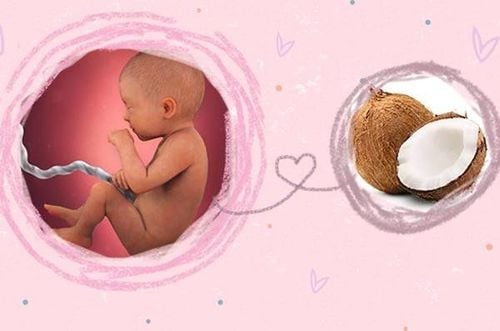
Fetus 33 weeks old Your baby's weight at this time is about 2kg and the length from head to toe is 43.7cm. The baby's body temperature is also more stable and no longer depends much on the mother's body temperature. Your baby's brain is still developing at a dizzying rate. Therefore, pregnant women should continue to increase DHA-rich foods. Now, the 33-week-old fetus is the size of a pumpkin.
34 weeks fetus The first amount of meconium has been formed in the baby's belly. The skeleton has gradually improved and is much stronger, except for the skull bone, which is still soft to facilitate the baby's future birth. At 34 weeks, the bones in the skull are still not fused, but that makes it easier for the baby's head to pass through the vagina. This means that it is easier for pregnant women to breathe, but the pressure on the bladder is heavier. The 34-week-old baby has grown to the size of a large celery plant.
Fetal 35 weeks old At 35 weeks gestation, the baby weighs about 2.3kg and is 46.2cm long. Most of the parts of the baby's body have completed their functions. Therefore, if there are no health complications, the baby will still be healthy if born this week. The central nervous system as well as the lungs are gradually maturing. Babies born between 34 and 37 weeks have been able to develop independently, without health complications, and can be born healthy.
36 weeks pregnant Your baby's weight this week will be about 2.6 kg and size from head to toe is 47 cm. Week 36, the baby is as big as a pineapple, so it feels more cramped in the uterus. The baby's kidneys are fully developed and the liver is already able to excrete unnecessary substances. Most of your baby's organs are already complete, except for his brain and lungs, which will continue to develop until he's grown.
37 weeks pregnant At this time, the fetus has turned its head and will not stop butting its head towards the mother's pelvis. At 37 weeks, your baby gains about 30g per day. The baby's body will form a white wax, called caseosa vernix, to protect the skin. At this time, the baby is as big as a papaya. If the baby wants to be born this week, it will be a late premature birth that does not affect the baby's health much.
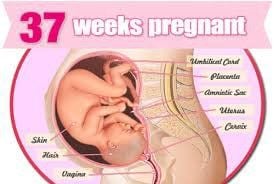
39 weeks fetus At 39 weeks gestation, activities such as sucking, breathing, sucking, digesting, excreting, crying,... will all happen naturally from this time until the baby greets you. life. Babies are also considered full term, but in some cases they are not really ready to go out to meet their parents.
40 weeks pregnant week 40, the physical development of the fetus has completed, but the baby continues to produce the necessary amount of fat so that the body can regulate its temperature when born. Baby at 40 weeks is as big as a big pumpkin.
3. Stage 3: Welcoming the baby
When your baby is born, you will see that he is connected to his mother by an umbilical cord that is up to 50cm long. Through the umbilical cord, all nutrients and oxygen will be transferred from the mother to the baby and then the waste products from the baby also through the umbilical cord out through the mother's excretory system.After the baby is born, the umbilical cord is cut, leaving about 2 to 3cm of the part directly connected to the baby's navel. Gradually, the umbilical cord will dry and then fall off on its own, forming a baby navel, which will develop like a normal person. Today, the direct laser umbilical cord cutting method right after birth is also applied in many institutes, which is safer and avoids more infections.
The first week after birth belongs to the perinatal period is an important period, at this time the baby begins to get used to the new living environment with many surprises and difficulties. The first month after birth is the neonatal period, this is the most dangerous time in life, with the highest risk of death.
The journey of 9 months and 10 days of pregnancy is magical and full of surprises. Vinmec International General Hospital currently offers all-inclusive maternity health care packages with outstanding quality. Pregnant women are accompanied by experienced obstetricians and gynecologists at Vinmec throughout the process during pregnancy - labor - postpartum. Maternity packages at Vinmec International General Hospital include:
Maternity package 12 weeks Maternity package 27 weeks Maternity package 36 weeks Maternity package pregnancy - labor Dr. Nguyen Anh Tu has 6 years of experience years of obstetrics and gynecology ultrasound, specially researched and trained in fetal ultrasound - prenatal diagnosis. Dr. Tu has completed courses on ultrasound - prenatal diagnosis of the FMF International Fetal Medicine Association; trained in consulting and implementing diagnostic intervention techniques in fetal medicine and participated in many specialized conferences and seminars on Fetal Medicine. Currently a doctor at the Department of Obstetrics and Gynecology, Vinmec Hai Phong International General Hospital
Please dial HOTLINE for more information or register for an appointment HERE. Download MyVinmec app to make appointments faster and to manage your bookings easily.





